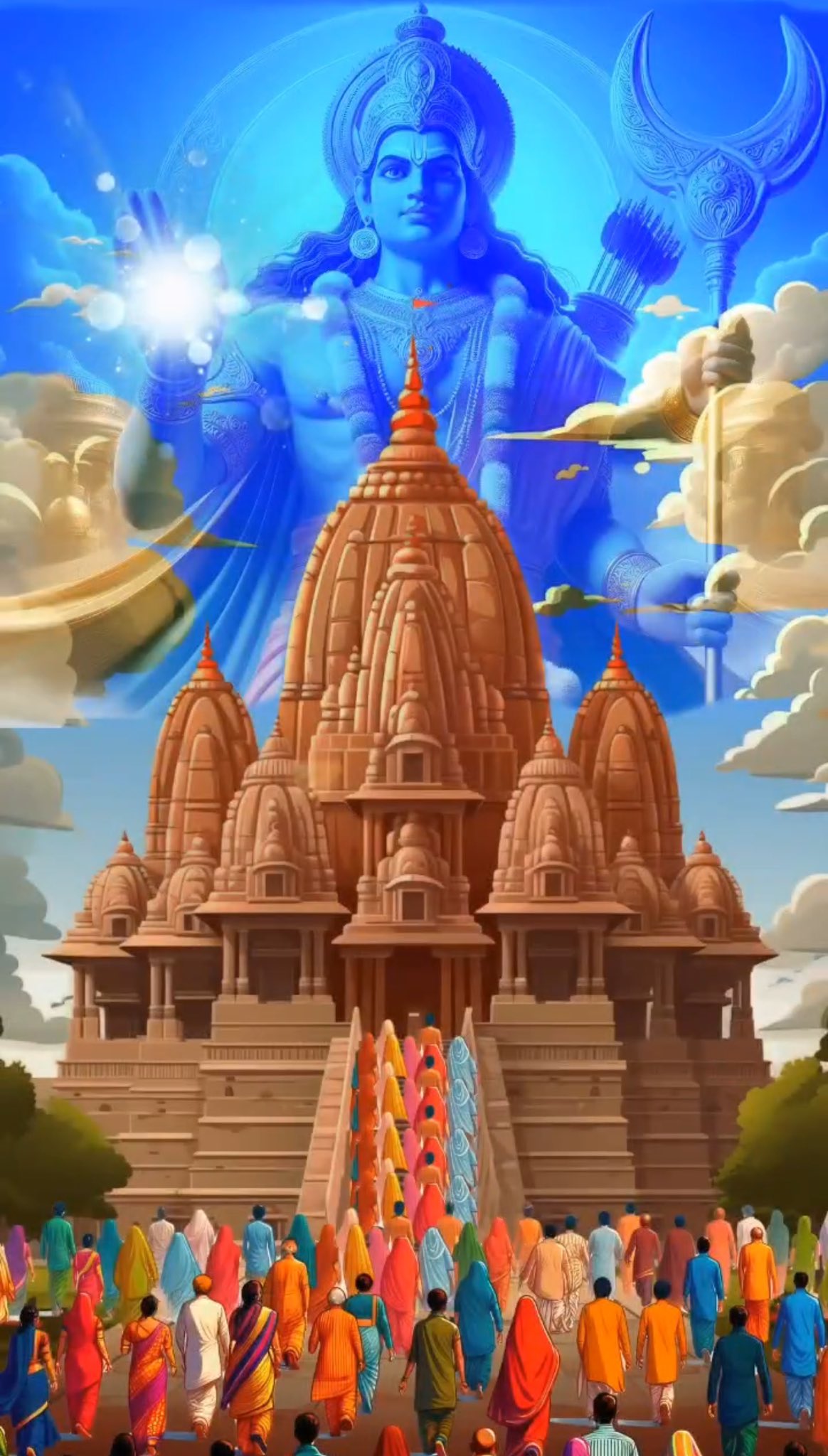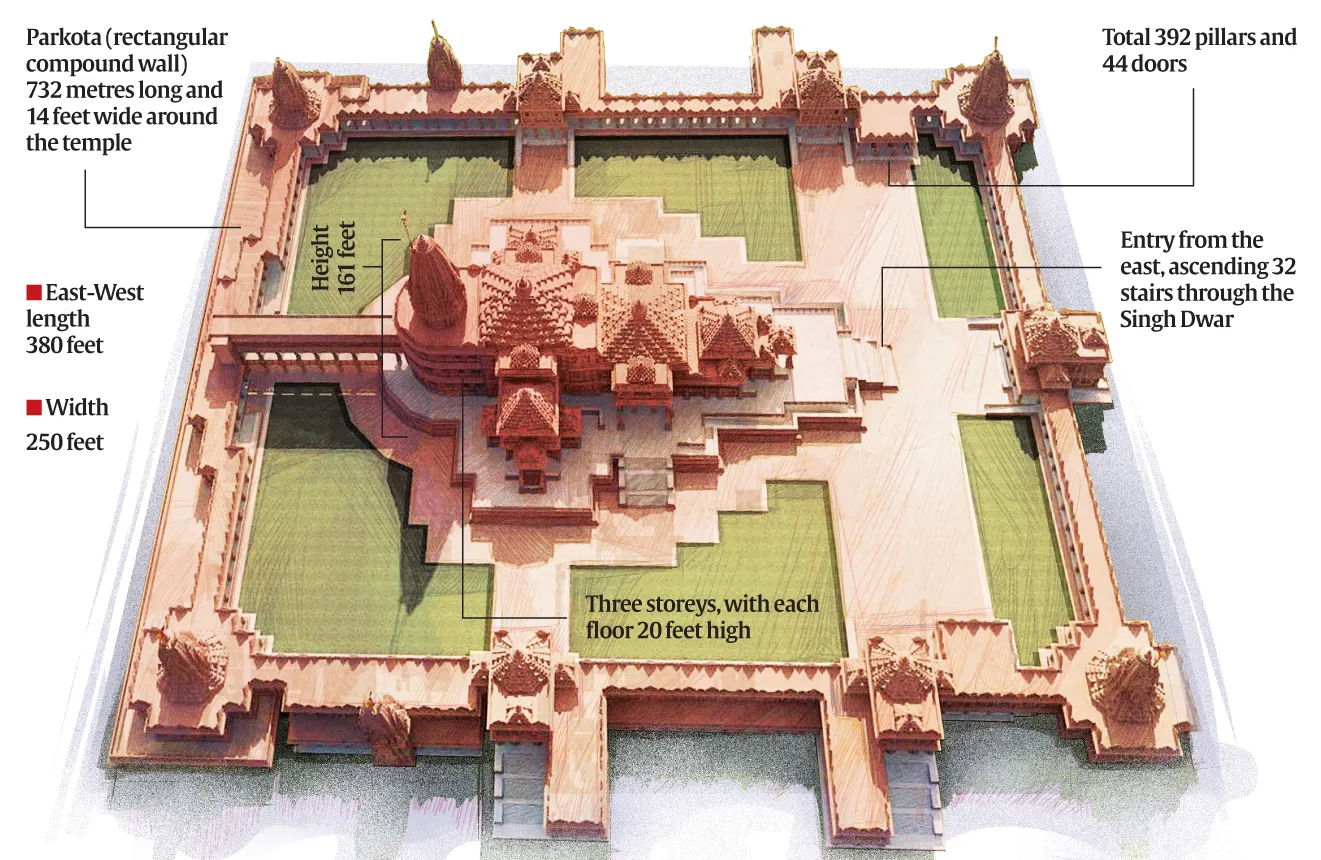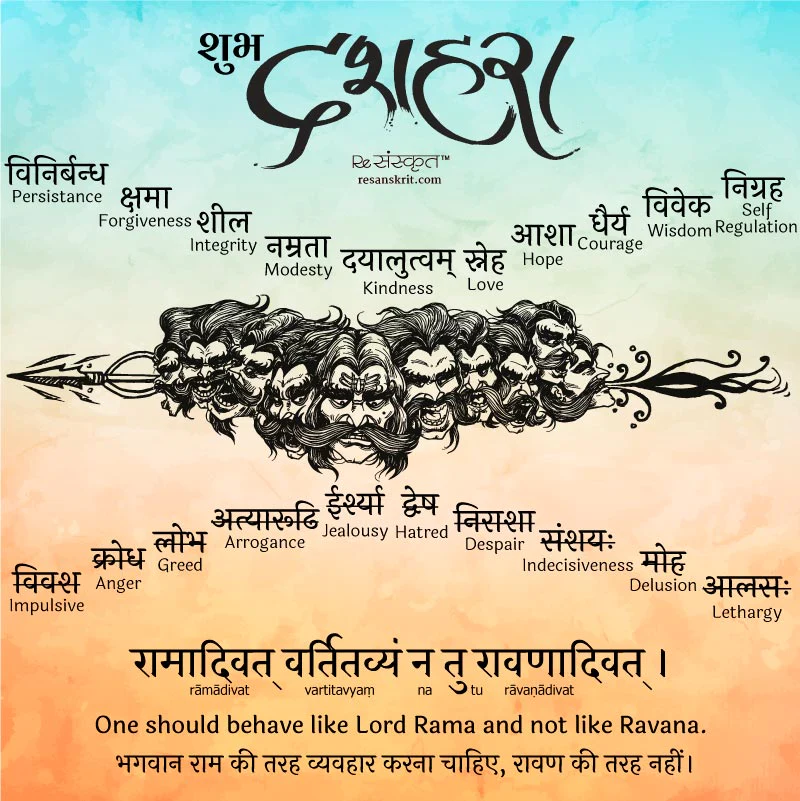रामो विग्रहवान्धर्मः साधुः सत्यपराक्रमः।
rāmo vigrahavāndharmaḥ sādhuḥ satyaparākramaḥ।
Honorable and truly brave – Rāma is the embodiment of Dharma!
वाल्मीकिरामायणम् ३.३७.१३ (vālmīkirāmāyaṇam 3.37.13)

The Ram temple in Ayodhya will be inaugurated on January 22. Chandrakant Sompura, 81, and his son Ashish, 51, have designed the complex in the Nagara style of temple architecture.
The Nagara style of temple architecture emerged some time in the fifth century CE, during the late Gupta period, in northern India. It is seen in juxtaposition with the Dravida style of southern India, which too emerged in the same period.
Nagara temples are built on a raised plinth, with the garbha griha (sanctum sanctorum) — where the idol of the deity rests — the most sacred part of the temple. Towering over the garbha griha is the shikhara (literally ‘mountain peak’), the most distinguishable aspect of Nagara style temples.
As the name suggests, shikharas are human-made representations of the natural and cosmological order, as imagined in Hindu tradition.

“Meru, Mandara and Kailasa are the first three names amongst the twenty types of temples described in the early texts … all three are the names of the Mountain, which is the axis of the world,” Stella Kramrisch wrote in her pioneering work, The Hindu Temple Vol I (1946). “In these names rises the temple, the image, aim and destination of this world edifice.”
A typical Nagara style temple also comprises a circumambulatory passage around the garbha griha, and one or more mandapas (halls) on the same axis as it. Elaborate murals and reliefs often adorn its walls.
इन्द्रियाणि पुरा जित्वा जितन् त्रिभुवनं त्वया।
स्मरद्भिरिव तद्वैरमिन्द्रियैरेव निर्जितः॥
indriyāṇi purā jitvā jitan tribhuvanaṃ tvayā।
smaradbhiriva tadvairamindriyaireva nirjitaḥ॥
(Mandodari comment on Ravana post his death) – In the past, by performing a great penance, you
conquered the senses and conquered the three worlds.
Now, as if avenging that enmity, those very senses conquered you.
Valmiki’s Ramayana, Yudh Khanda 6.111.18
Jai Shri Ram!

